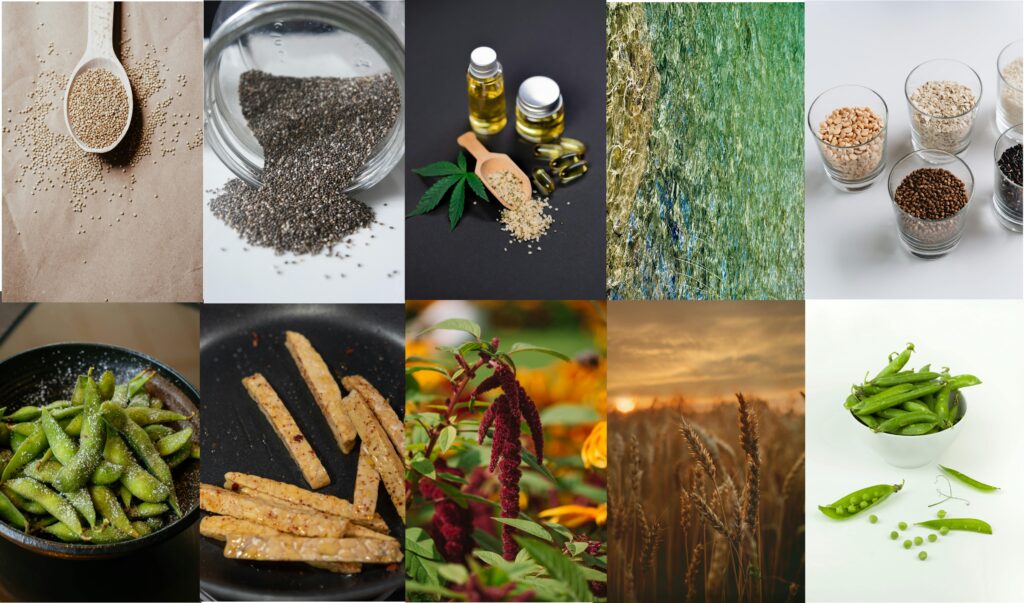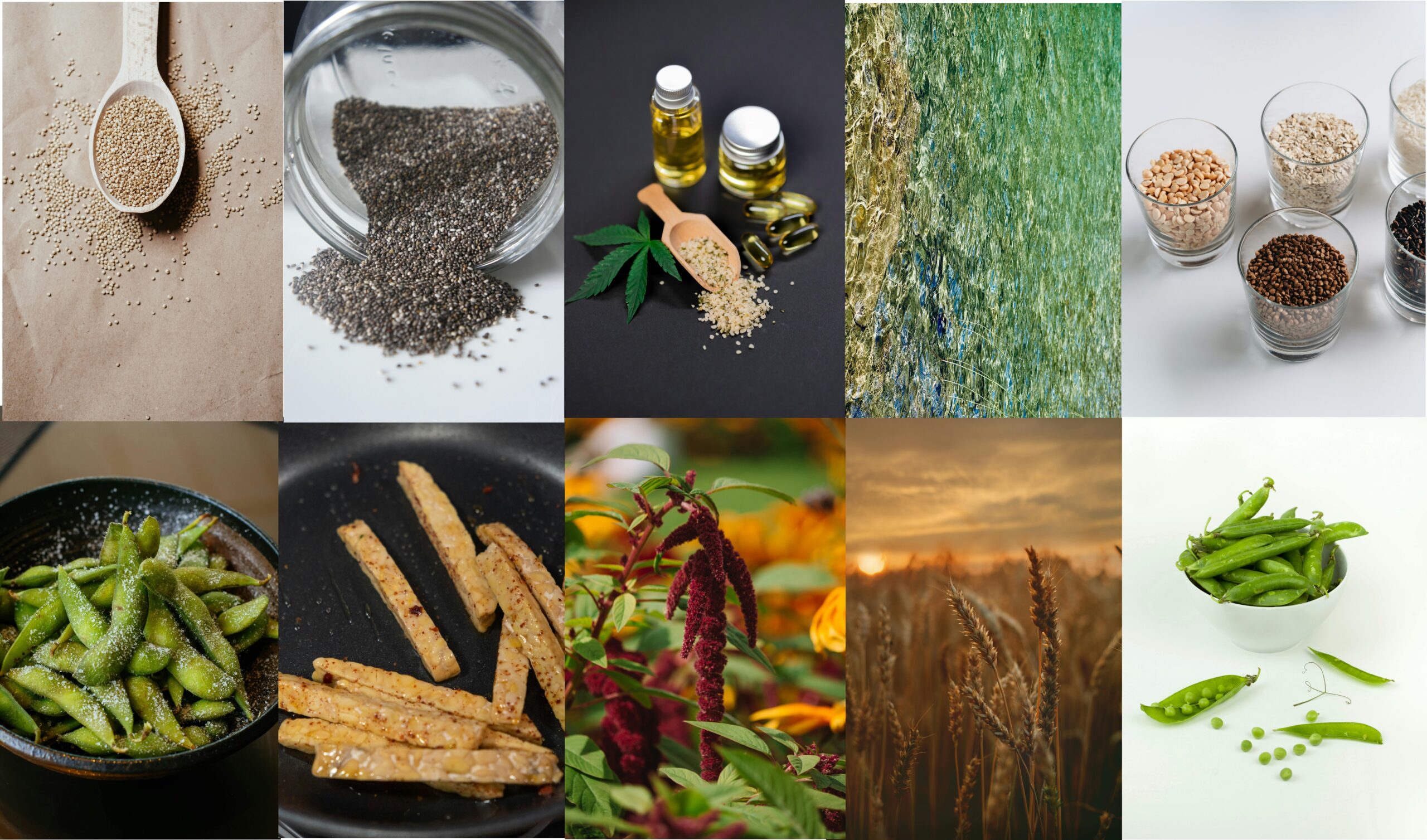Table of Contents

Introduction
Plant-based proteins have been gaining significant attention in recent years due to their health benefits and sustainable nature. With an increasing number of people adopting vegan or vegetarian diets, the demand for plant-based protein sources has surged. In this article, we will explore the top 10 novel plant-based proteins that can help you lead a healthier lifestyle. These proteins are not only nutritious but also versatile and delicious.
Quinoa
Quinoa is often referred to as a superfood, and for good reason. This ancient grain, native to the Andean region of South America, has been cultivated for thousands of years. Unlike most plant-based foods, quinoa is a complete protein, meaning it contains all nine essential amino acids that the body cannot produce on its own. Additionally, it’s rich in fiber, magnesium, iron, and antioxidants, making it a nutrient-dense food that supports overall health.
Nutritional Benefits
- High in Protein: One cup of cooked quinoa provides about 8 grams of protein.
- Gluten-Free: Suitable for individuals with gluten intolerance or celiac disease.
- Essential Amino Acids: Contains lysine and isoleucine, which are often lacking in other grains.
How to Use: Quinoa’s versatility makes it easy to incorporate into your diet. It can be used in salads, soups, and as a base for veggie burgers. It’s also a great substitute for rice and pasta. Try a quinoa breakfast bowl with fruits and nuts, or use it in a stuffed pepper recipe for a hearty dinner. Its slightly nutty flavor complements both sweet and savory dishes.
Chia Seeds
Chia seeds are tiny black or white seeds that pack a powerful nutritional punch. Originating from the Salvia hispanica plant, these seeds were a staple food for ancient Aztec and Mayan civilizations. They are incredibly rich in protein, omega-3 fatty acids, fiber, and various micronutrients. When soaked in liquid, chia seeds expand and form a gel-like consistency, making them a versatile ingredient in many recipes.
Nutritional Benefits
- High in Protein: About 4 grams of protein per ounce.
- Rich in Omega-3 Fatty Acids: Essential for heart and brain health.
- Excellent Source of Fiber: Helps with digestion and keeps you feeling full longer.
How to Use: Chia seeds can be easily added to your diet. Sprinkle them on top of your oatmeal, yogurt, or smoothie bowls for an extra nutritional boost. They can also be used to make chia pudding by soaking them in milk (plant-based or dairy) and adding sweeteners and fruits. Chia seeds can even be used as an egg substitute in baking – simply mix one tablespoon of chia seeds with three tablespoons of water and let it sit until it forms a gel.
Hemp Seeds
Hemp seeds, also known as hemp hearts, are the seeds of the Cannabis sativa plant. Despite their association with the cannabis plant, hemp seeds contain only trace amounts of THC and do not produce any psychoactive effects. They are, however, a nutritional powerhouse, offering complete protein, essential fatty acids, and a range of vitamins and minerals.
Nutritional Benefits
- High in Protein: About 10 grams of protein per 3 tablespoons.
- Rich in Omega-3 and Omega-6 Fatty Acids: Supports heart health and reduces inflammation.
- Contains Magnesium, Zinc, and Iron: Essential minerals for various bodily functions.
How to Use: Hemp seeds have a slightly nutty flavor and can be easily incorporated into various dishes. Sprinkle them on salads, mix them into smoothies, or add them to baked goods for a nutritional boost. They can also be blended into a creamy hemp milk, which can be used in cereals, coffee, or as a dairy milk alternative in recipes.
Spirulina
Spirulina is a type of blue-green algae that is considered one of the most nutrient-dense foods on the planet. This ancient microorganism has been consumed for centuries due to its high nutritional value and health benefits. Spirulina is an excellent source of protein, vitamins, minerals, and antioxidants.
Nutritional Benefits
- High in Protein: About 4 grams of protein per tablespoon.
- Contains B Vitamins, Iron, and Beta-Carotene: Essential for energy production, immune function, and eye health.
- Powerful Antioxidant and Anti-Inflammatory Properties: Helps protect cells from damage and reduces inflammation.
How to Use: Spirulina is available in powder and tablet form. The powder can be added to smoothies, juices, and energy bars to boost their nutritional content. It’s best to start with a small amount due to its strong flavor and gradually increase the quantity. Spirulina tablets can be taken as a dietary supplement for those who prefer a more convenient option.
Lentils
Lentils are a staple in many vegetarian and vegan diets. These small legumes are not only rich in protein but also in fiber, iron, and folate. Lentils come in various colors, including green, red, and black, each with its unique texture and flavor.
Nutritional Benefits
- High in Protein: About 18 grams of protein per cup of cooked lentils.
- Rich in Fiber: Promotes digestive health and helps maintain stable blood sugar levels.
- Contains Iron and Folate: Essential for red blood cell production and DNA synthesis.
How to Use: Lentils are incredibly versatile and can be used in soups, stews, salads, and veggie burgers. Green lentils hold their shape well and are great in salads, while red lentils break down easily and are perfect for soups and curries. Lentil tacos, lentil loaf, and lentil-based pasta sauces are just a few creative ways to include them in your meals.
Edamame
Edamame are young soybeans that are harvested before they ripen. These vibrant green beans are a popular snack and a great source of plant-based protein, fiber, and essential vitamins and minerals.
Nutritional Benefits
- High in Protein: About 17 grams of protein per cup of cooked edamame.
- Rich in Fiber: Aids in digestion and helps regulate blood sugar levels.
- Contains Vitamins A, C, and K: Supports immune function, skin health, and blood clotting.
How to Use: Edamame can be enjoyed in various ways. They can be steamed and eaten as a snack, often with a sprinkle of sea salt for added flavor. Edamame can also be added to salads, stir-fries, and sushi rolls for a protein boost. For a fun and healthy appetizer, try making spicy edamame by tossing the beans in a mixture of soy sauce, garlic, and chili flakes.
Tempeh
Tempeh is a traditional Indonesian food made from fermented soybeans. This fermentation process not only enhances its nutritional value but also gives tempeh a firm texture and a nutty flavor. It’s a complete protein source and rich in probiotics, which are beneficial for gut health.
Nutritional Benefits
- High in Protein: About 15 grams of protein per 3 ounces.
- Contains Probiotics: Supports gut health and boosts the immune system.
- Rich in Vitamins and Minerals: Provides B vitamins, magnesium, and phosphorus.
How to Use: Tempeh can be used in a variety of dishes. It can be marinated and grilled, crumbled into salads, or used as a meat substitute in sandwiches and tacos. Tempeh stir-fry with vegetables, tempeh bacon, and tempeh chili are just a few delicious ways to enjoy this nutritious food. Its firm texture makes it an excellent substitute for meat in many recipes.
Seitan
Seitan, also known as wheat meat, is made from gluten, the protein in wheat. It’s a high-protein, low-carb meat substitute that has a chewy texture similar to meat. Seitan is a popular choice for those looking to increase their protein intake while avoiding animal products.
Nutritional Benefits
- High in Protein: About 21 grams of protein per 3 ounces.
- Low in Carbohydrates: Suitable for low-carb diets.
- Rich in Iron: Essential for transporting oxygen in the blood.
How to Use: Seitan can be sliced and added to stir-fries, sandwiches, and salads. It can also be used as a meat substitute in various recipes, such as seitan sausages, seitan burgers, and seitan BBQ ribs. Due to its chewy texture and ability to absorb flavors, seitan is a versatile ingredient that can mimic the texture of meat in many dishes.
Pea Protein
Pea protein is derived from yellow split peas. It’s a complete protein and is easily digestible, making it an excellent choice for those with digestive issues. Pea protein powder is a popular ingredient in vegan protein shakes and bars.
Nutritional Benefits
- High in Protein: About 15 grams of protein per scoop.
- Easily Digestible: Gentle on the stomach and suitable for those with digestive issues.
- Hypoallergenic: Free from common allergens such as dairy, soy, and gluten.
How to Use: Pea protein powder can be added to smoothies, baked goods, and energy bars for an easy protein boost. It can also be used to make protein-rich soups and sauces. Pea protein is often found in plant-based protein shakes and meal replacement bars, making it convenient for on-the-go nutrition.
Amaranth
Amaranth is an ancient grain that is naturally gluten-free and a great source of protein, fiber, and micronutrients. It’s similar to quinoa in its nutritional profile but has a slightly different taste and texture.
Nutritional Benefits
- High in Protein: About 9 grams of protein per cup of cooked amaranth.
- Gluten-Free: Suitable for individuals with gluten intolerance or celiac disease.
- Contains Iron, Magnesium, and Phosphorus: Essential minerals for bone health and energy production.
How to Use: Amaranth can be cooked and used as a side dish, added to soups and stews, or popped like popcorn for a crunchy snack. It can also be used to make porridge or as a flour substitute in baking. Amaranth’s slightly nutty flavor pairs well with both sweet and savory dishes, making it a versatile addition to your pantry.
Conclusion
Incorporating a variety of plant-based proteins into your diet can significantly improve your health and well-being. These novel plant-based proteins not only provide essential nutrients but also offer diverse culinary possibilities. Whether you are vegan, vegetarian, or simply looking to reduce your meat consumption, these plant-based proteins can help you achieve a balanced and nutritious diet.
References
https://www.ncbi.nlm.nih.gov/pmc/articles/PMC7760812
https://www.ncbi.nlm.nih.gov/pmc/articles/PMC8804093
https://www.ncbi.nlm.nih.gov/pmc/articles/PMC6627181
https://www.ncbi.nlm.nih.gov/pmc/articles/PMC6994964
https://www.ncbi.nlm.nih.gov/pmc/articles/PMC7891210
https://www.ncbi.nlm.nih.gov/pmc/articles/PMC9875026
https://www.ncbi.nlm.nih.gov/pmc/articles/PMC3136577
https://www.ncbi.nlm.nih.gov/pmc/articles/PMC5713359
https://www.ncbi.nlm.nih.gov/pmc/articles/PMC10945126
https://www.ncbi.nlm.nih.gov/pmc/articles/PMC9363820
https://www.ncbi.nlm.nih.gov/pmc/articles/PMC10255641
https://www.ncbi.nlm.nih.gov/pmc/articles/PMC10201680
https://www.ncbi.nlm.nih.gov/pmc/articles/PMC9412838
https://www.ncbi.nlm.nih.gov/pmc/articles/PMC8871380
YouTube Linkhttps://youtube.com/shorts/Diy-iztWHmY?feature=share

